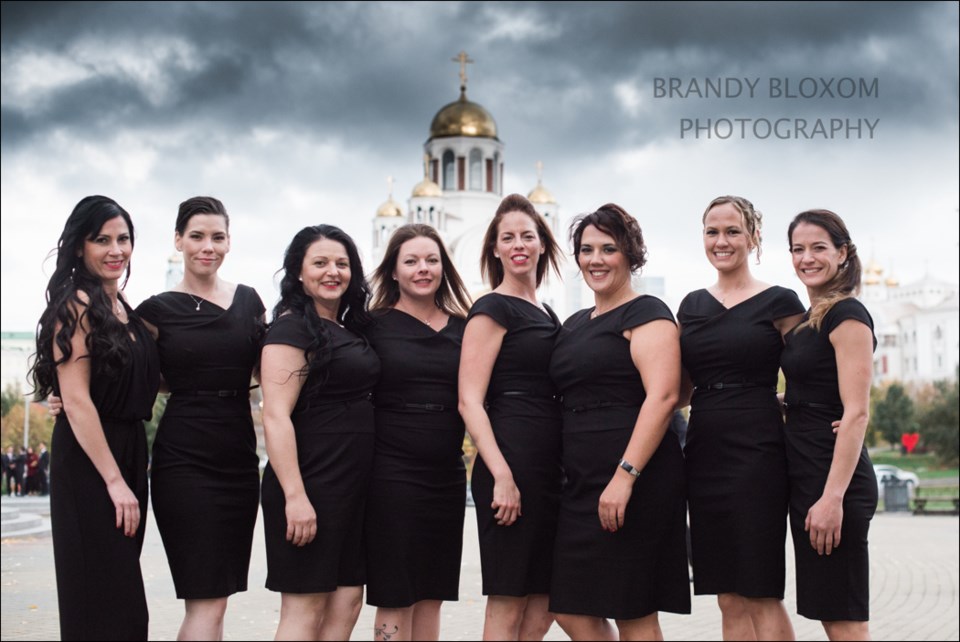An all-Canadian, all-female mine rescue team made history last month in Russia, becoming the first females to complete work underground in a country that prohibits it.
Diamonds in the Rough, a mine rescue team composed of eight Canadian mining professionals, including Denare Beach’s Kari Lentowicz and Snow Lake’s Jodi Brasch, travelled to Russia on Sept. 21 to take part in the week long International Mine Rescue Competition (IMRC) in Ekaterinburg, Russia.
The team was co-founded and coached by Lentowicz, a long-time mine rescue competitor and crisis management expert. Lentowicz created the team to increase diversity in non-traditional work spaces.
Though there had been some communication between members of the team, many who hail from different provinces, the team didn’t officially meet as a cohesive unit until August, just weeks before the competition.
“We spent 10 days together,” said Brasch.
“We went up to Rabbit Lake’s Cameco operations and trained together as a team. We came home, had two weeks and then went to Russia.”
Each member of the team is involved in or has background in mine rescue. They each train individually as part of their units, and spent the 10 days of training before their trip to Russia learning to work together as a team.
It paid off. Diamonds in the Rough placed fifth in the underground rescue event and came in fifteenth overall in the IMRC, out of 25 teams from across the world, the rest of which were comprised of men.
“It was amazing. It was the best experience of my life,” said Lentowicz.
“We were welcomed with open arms by the Russians and the rest of the teams, and we actually couldn’t stop getting our photos taken. They must have had at least 1,000 photos taken with every team, the Russian military – they were so welcoming, they were rooting for us the whole way.”
There were seven components to the competition: mine rescue simulation, firefighting, first aid, technician contest, theory exam, virtual reality, and a mine rescue relay race. For Brasch, who works underground at Lalor Mine, the underground mine rescue simulation was her favourite event.
“There were three workers underground that we had to go and find,” said Brasch.
“It resulted and crawling through tunnels, getting our team through tunnels...we basically had 75 minutes to go in and recover the missing and bring them back to the surface at that time. We came up with 35 seconds to spare.”
Lentowicz described the relay race as the most difficult event, and also the most emotional. The race was based on strength, and involved cleaning and pressing a 70 pound log, running across a balance beam carrying significant weights, pull ups, using hydraulic equipment to cut through rebar while wearing full apparatus, flipping a 250 pound tire five times, tossing 110 pound sandbags and dragging a dummy.
“I was on the last leg. I had the dummy over my shoulder, then I hurt my leg and went down,” explained Lentowicz.
“Our finish was the best. We were last in relay, but my team picked up that dummy and we ran across the finish line as a team. My captain carried me across the finish line. Overall we didn’t place, but as a team we came in first. I’m so impressed with my team. We went and kicked some ass.”
While the whole experience was memorable, Lentowicz said the most rewarding part was the recognition that women can be viable competitors and do what it takes in mine rescue.
“One of the best parts was we had several team members from various teams tell us they were going to go home and tell their daughters they can do anything, which is the best compliment ever,” said Lentowicz, adding it was rewarding to know that the next generation will have an easier time, and also the confidence to seek out this type of role.
Diamonds in the Rough received the People’s Choice award during the closing ceremonies, and also a special award from Dezega, a breathing apparatus manufacturer, for “breaking the barrier and becoming the first ever women to compete together as a team, and basically changing mine rescue, internationally,” said Brasch.
While the International Mine Rescue Competition takes place every other year, Brasch said Diamonds in the Rough will continue to operate, and welcome women who are interested in joining the group.




